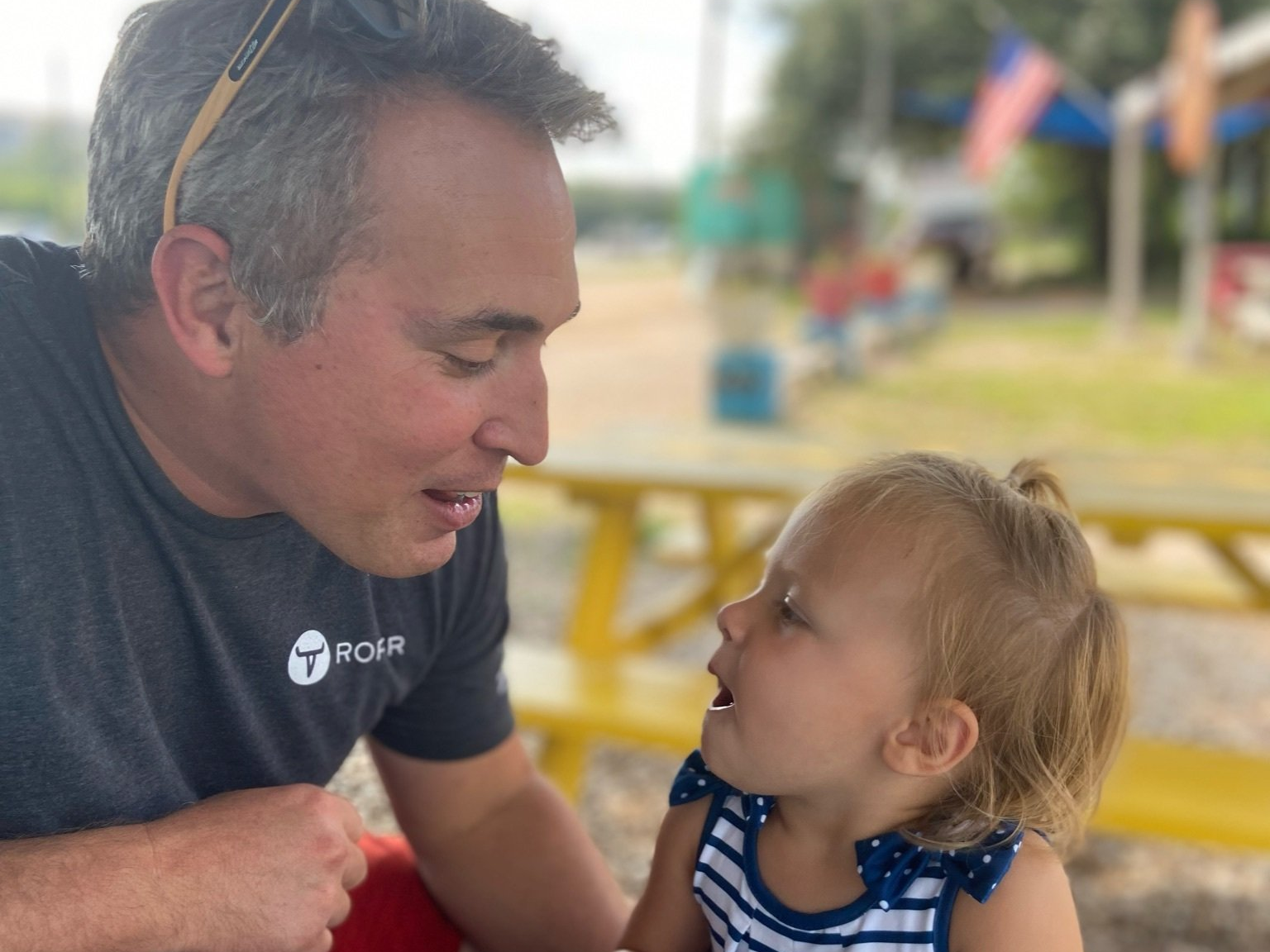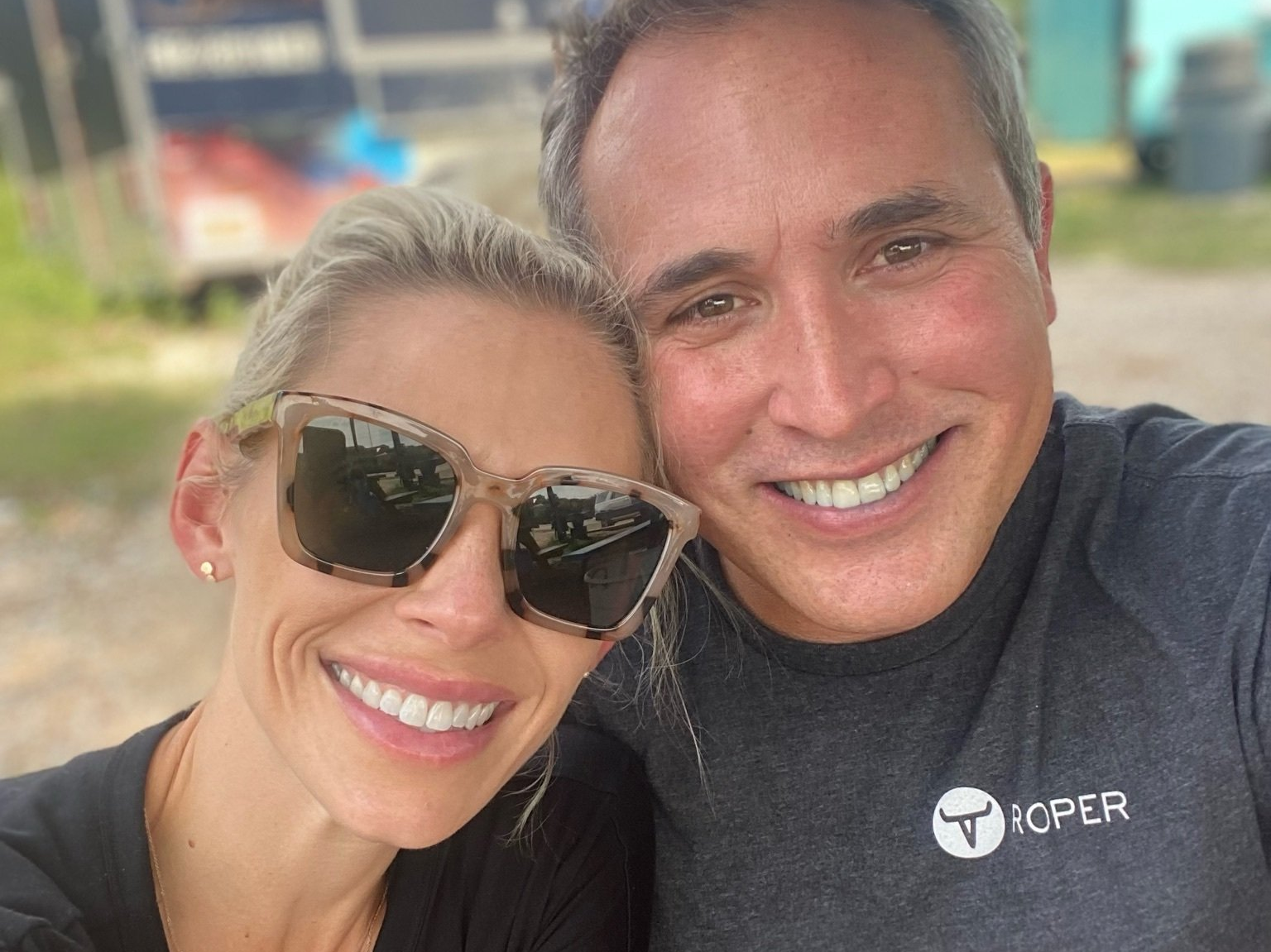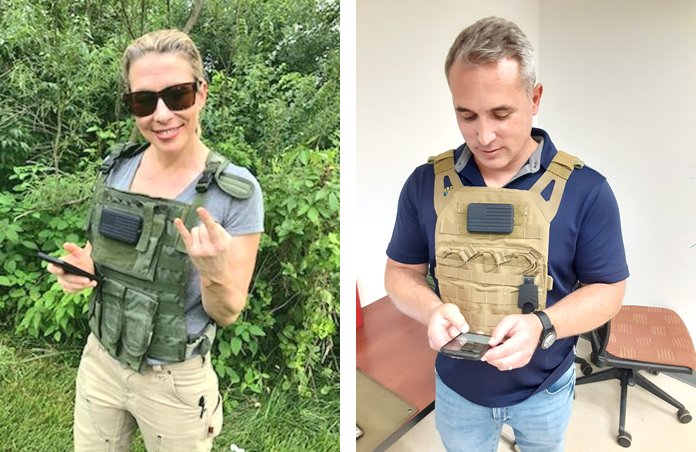
It’s daybreak in Austin, and retired US Navy SEAL Dana De Coster’s day has begun. His days start differently now—instead of leading an assault on a target in Iraq, he is now shooting a video on how to use PATCH, a new device that he co-invented to help people stay connected in remote, off-grid environments. In between shots, he and his wife Shayla take turns looking after their daughter, Bryn.
“Serving my country as a Navy SEAL was what I dreamed of as a kid, so it was difficult to follow up on my dream career. Like many veterans, my transition out of active duty after 20 years of service was a time of soul-searching. How could I find a new, meaningful path as a civilian?”

The answer came over lunch in 2018 with former colleague Maeve Garigan, an engineer and technology advisor who had worked closely with De Coster on a project using backpackable drones for SEAL operations.
“Maeve had a couple interesting projects, and one was really taking off. Just that day, she found out that she had won a $100,000 grant to develop a prototype of a GPS ear-tag for cattle. Naturally, our conversation steered toward what I was planning to do after retirement, and we decided to go into business together.”
The business decision was a fruitful one. During a brainstorming session, Garigan and De Coster discovered that the tracking and monitoring technology for the ear-tag could be repurposed to provide a critical capability for encrypted, off-grid communication.
“It was already small, light, low-power and rugged. So our idea was to reskin the same technology as a wearable patch, like a US flag patch or other type of badge that a military member would wear. We could provide a new capability without adding any new items to their load out. Troops are already overloaded with gear, and we didn’t want to worsen the problem,” explained De Coster.
This new capability was an important one—and one that had been chronically overlooked by Pentagon decisionmakers. “I deployed five times, each time serving at a higher level of command. And each time we lacked the tools to effectively track and communicate with our partner nation forces. It was like watching the same bad movie over again. Maintaining situational awareness is a major challenge in the fog of war and we just didn’t have a solution that worked, and that people would actually use. The Department of Defense spends a lot of money, and a lot of that money is misspent. We suffered the consequences of that.”
This new technology was named PATCH, short for Personal and Tactical Communications Hardware. PATCH connects to a user’s smartphone to send text messages, GPS and map locations, and activity status over a mesh network with end-to-end encryption. This allows the user to privately communicate with other PATCH users completely off-grid, without cell service, WiFi or satellite. The first PATCH prototypes were built in 2021 for a Special Operations technology demonstration event.

“Building PATCH from the ground up has been a ton of work and a tremendous learning experience. I look at other products and see a lot of hype and not a lot of substance. I’m proud that we are creating purposeful, innovative technology that really improves people’s lives,” said De Coster.
“I hope that my story inspires other people transitioning out of the military, showing them how they can continue a culture of service and live their values.”
Visit www.builtbyroper.com to learn more about the PATCH inventors and their team's groundbreaking work.


